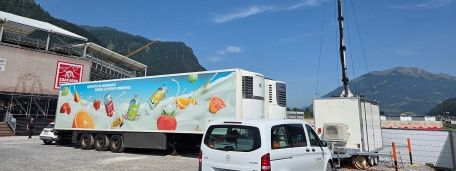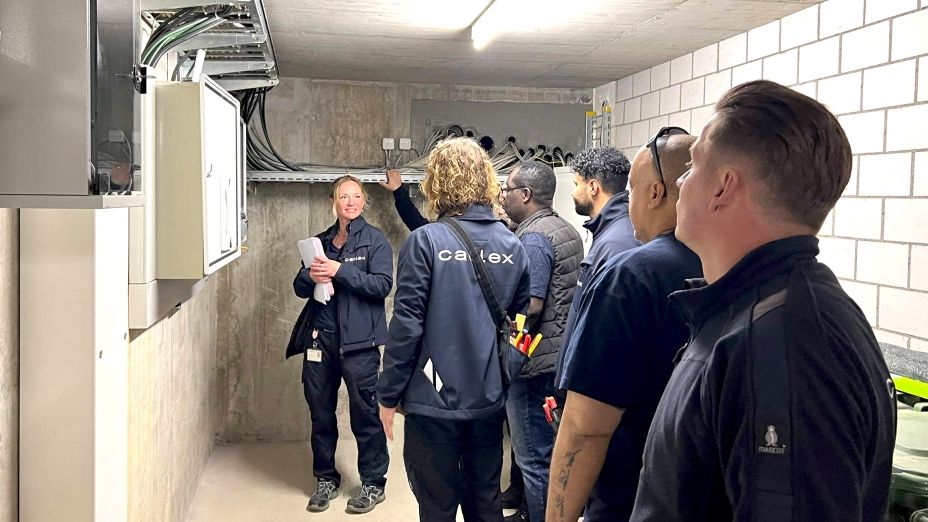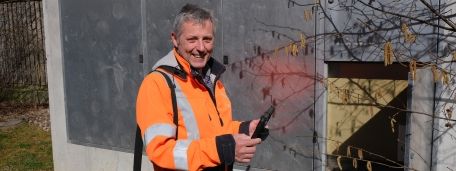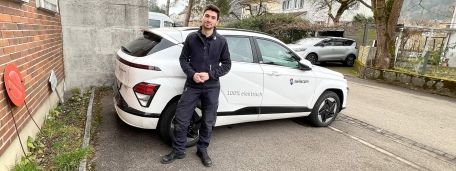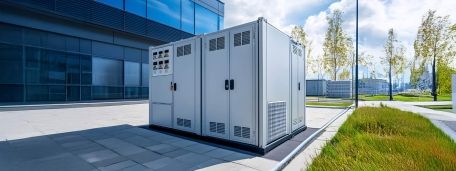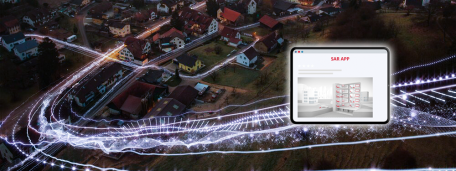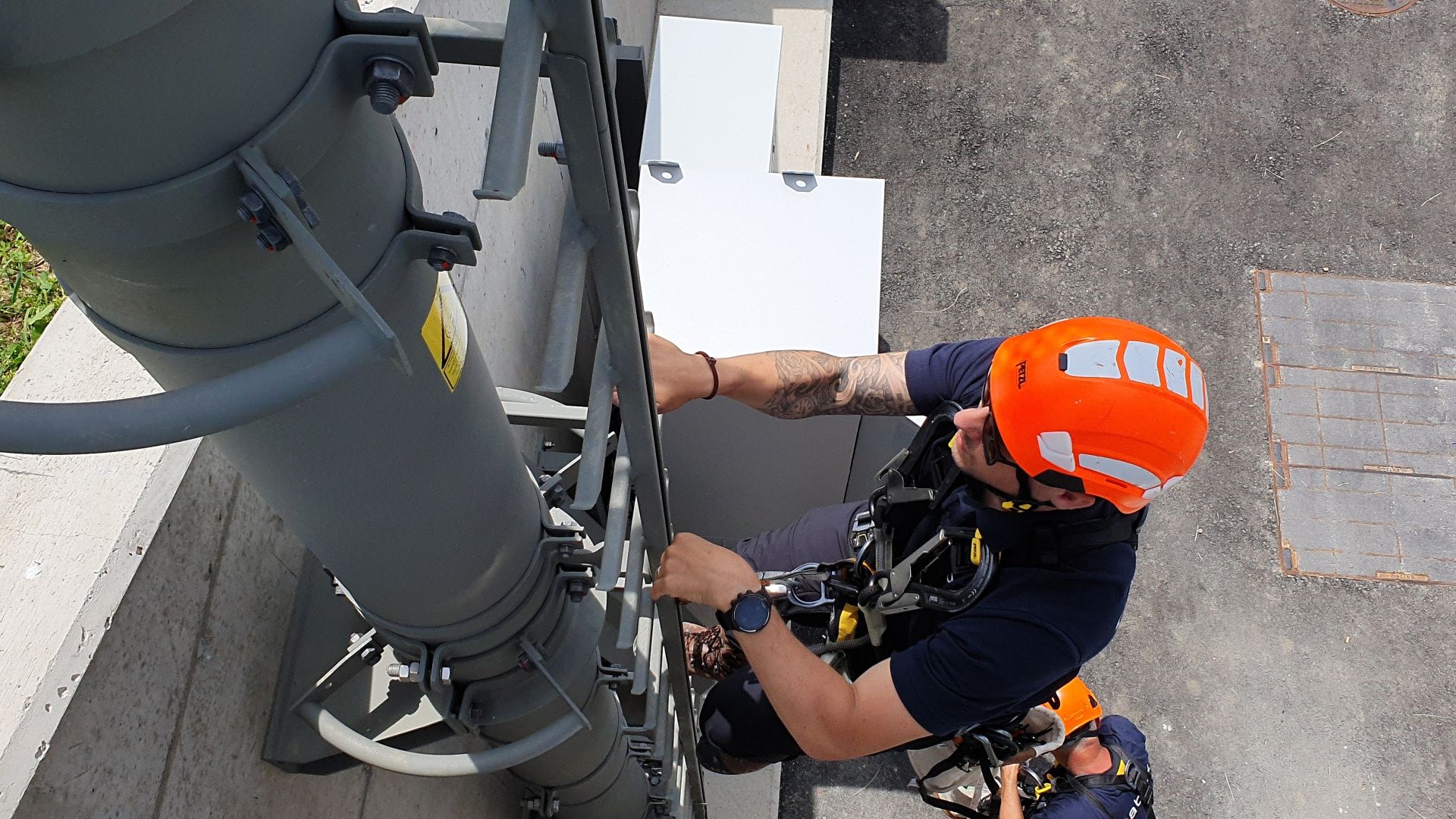
Swisscom mobile communications acceptance inspections.
When the construction measures on a mobile communications antenna are completed, the installation technicians carry out a self-check based on a checklist using the dual-control principle. This is followed by an additional cablex internal check by the project manager(s) or the site manager. The new mobile communications antenna in Bellikon was put to the test by Severin Brandenberger, site manager of the Wireless unit, and the quality manager Kurt Eggenberger. For reasons of work safety, work on a radio mast must always be carried out by two people.
Site manager Severin and quality expert Kurt check whether the new mobile communications installation complies with the construction specifications. In doing so, they primarily ensure that the legal requirements for NIR (non-ionising radiation) are complied with.
The NIR test of a new or converted mobile communications antenna is essentially carried out in four steps:
Alignment.
Special GPS measuring antennas provide information on whether the alignment of the mobile communications antennas has been set correctly. The alignment of the new antennas must not deviate from the construction specifications by more than 2 degrees. If the tolerance is exceeded, readjustment is necessary.
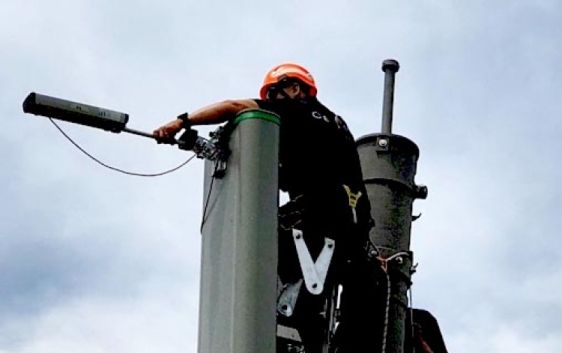
Tilt.
The mechanical tilt is measured in addition to the alignment of the antenna. During this check, the tilt of the antenna is checked with the help of a digital spirit level. If the tilt does not correspond to the specifications, this leads to slow data transmission and poor voice quality in the customer network.
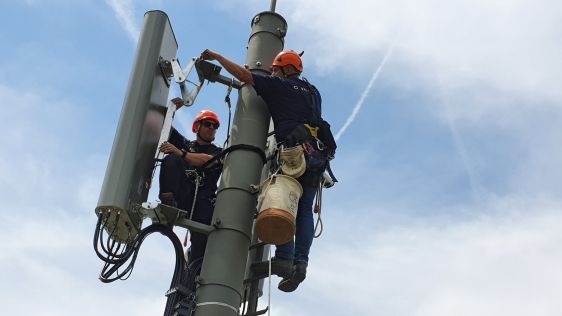
Height.
The height of the antenna is measured in a third step. If the height of the antenna deviates from the planned height by more than 10 centimetres, the NIR specifications are not satisfied. By the way, the highest antenna mast is located on the Jungfraujoch at an altitude of around 3450 metres.
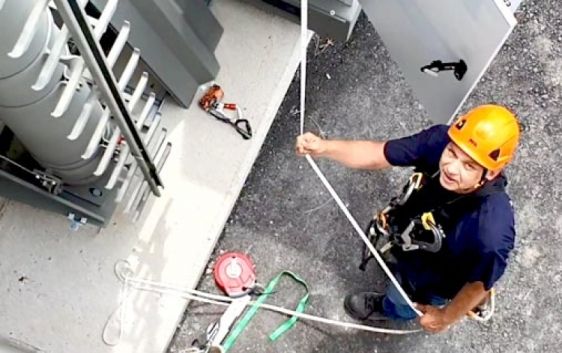
Antenna type.
“There are many different types of antennas,” explains Kurt Eggenberger. This testing step checks whether the correct antenna has been installed, because there are many different antenna types with differences in their transmission power and transmission frequency.
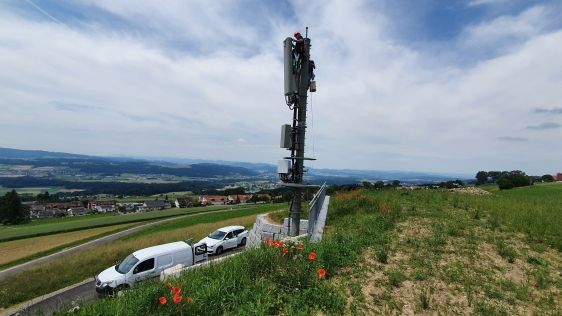
Other quality and safety checks.
Kurt and Severin also check the earthing and lightning conductor of the mobile communications antenna. A torque wrench is used to check whether the installation of the high-frequency antenna cables complies with the specifications. In their check, the site manager and quality manager also make sure that the antenna brackets are fastened to the mast correctly.
For work safety, it is important to make sure that the climbing protection system is installed correctly. This means checking the access barrier, as well as the Söll guide rail, and the DIN-certified anchor points.
The mast and the area around the system must be secured against entry by unauthorised persons.
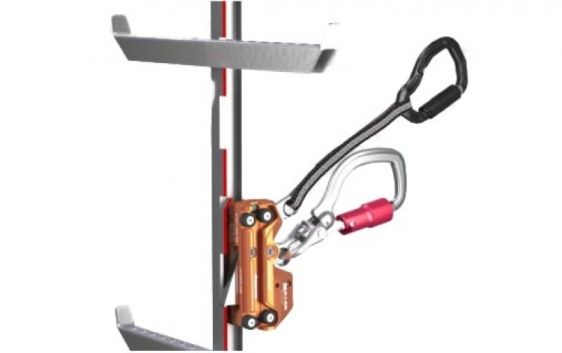
The site manager transmits the entire documentation of the safety inspection to the Swisscom database. As soon as the documentation in Swisscom's system is correct and complete, Swisscom then initiates its own acceptance check. The cantons also carry out random checks to monitor compliance with their legal requirements. OFCOM monitors and controls the entire process.


